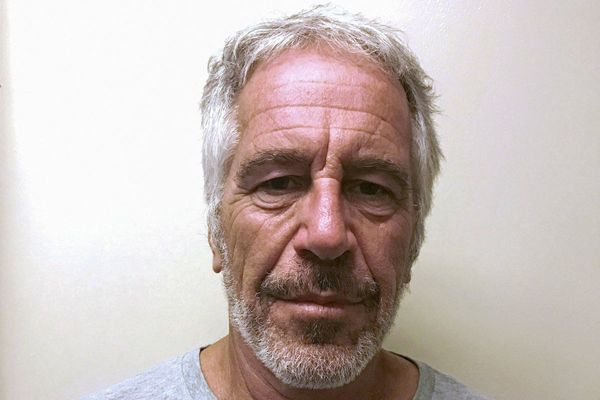
The world drug market has never been so globalised, active and diverse, according to the United Nations – which marks International Day Against Drug Abuse and Illicit Trafficking on Thursday. RFI takes a look at the latest trends, from the explosion of cocaine to shifting routes and new synthetic drugs.
The UN Office on Drugs and Crime (UNODC) said a “new era” of instability is fuelling organised crime and pushing drug use to “historically high levels”.
In 2023, an estimated 6 percent of people aged 15 to 64 used drugs – up from 5.2 percent in 2013. Cannabis remains the most commonly used.
Cocaine use, production and seizures all hit record highs in 2023, making it the fastest-growing illegal drug market.
There were 25 million users last year, up from 17 million in 2013.
“Cocaine has become fashionable for the more affluent society,” said Angela Me, chief researcher at UNODC. She warned of a “vicious cycle” of growing use and supply.
Production hit 3,708 tons – up nearly 34 percent from 2022 and more than four times higher than a decade ago. UNODC links the surge to a larger area under coca bush cultivation in Colombia and new yield data.
Cocaine use in France doubles as workplace pressures drive demand
Crime groups expanding
Global cocaine seizures also reached a record 2,275 tons – a 68 percent rise in four years.
Colombia remains the main producer, but crime groups are expanding into Asia and Africa. New trafficking routes now pass through countries such as Brazil and Ecuador.
Martinique and Guadeloupe are major gateways for drugs entering mainland France.
In 2024, 33 of the 52 tons of drugs seized nationwide – mostly cocaine – came from this region, according to the courts.
Meanwhile the ports of Rotterdam, Antwerp and Le Havre have become key European hubs.
Africa is also a growing transit zone for drugs moving from South America to Europe. In the Sahel, drug seizures grew from 13kg in 2015 to nearly 1,500kg in 2022.
Supply and demand are rising everywhere – especially in Europe, where seizures have outpaced North America’s for five years in a row.
Cocaine use is also increasing in areas once seen as marginal, including Africa and Asia – up 84 percent in 2023 compared to 2022.
“The north-south dichotomy no longer really works, with the south producing and the north consuming,” said Michel Gandilhon, a security and defence expert. “We are seeing an explosion in cocaine consumption in the countries of the south.”
Expansion of synthetic drugs
Synthetic drugs such as fentanyl, cathinones and nitazenes are reshaping the drug trade.
Made in labs with chemicals that are often legal or semi-legal, these drugs are easier to make and transport than plant-based substances.
“With synthetic drugs, there’s no longer any need for poppy and opium fields,” said Gandilhon. “It’s an emancipation from the constraints of nature and crops.”
In 2025, the UNODC tracked over 1,100 new psychoactive substances (NPS) worldwide.
Their rapid spread is outpacing the ability of governments to ban or detect them. In 2023, 34 countries reported 44 new substances – mostly synthetic cannabinoids.
In Europe, synthetic drug seizures now surpass those of herbal drugs. Substances like 3-MMC and nitazenes – up to 500 times stronger than morphine – are raising alarms among health authorities.
Because their formulas often change, the risks are hard to predict. They are also fuelling new sales channels through the dark web and social media.
“The rapid expansion of the illicit synthetic drug industry represents a major threat to global public health with potentially disastrous consequences for humanity,” said the head of the UN's International Narcotics Control Board.
Morocco extradites head of notorious Marseille drug gang to France
Opioids, a crisis with many facets
In the US, the opioid crisis began in the 1990s after widespread overprescription of painkillers pushed by pharmaceutical companies.
Millions became addicted. Now many users have turned to synthetic opioids like fentanyl, which is 50 times stronger than heroin.
Fentanyl is made in illegal labs in Mexico using chemicals imported from China.
It caused 75,000 deaths in the US in 2023, the CDC said. The number fell to 48,000 in 2024 – the lowest in five years.
Europe has largely avoided a fentanyl epidemic, though some trafficking cases have been found.
Heroin remains the dominant opioid in Europe and is still a major cause of drug-related deaths – 1,800 in 2022.
There are around 900,000 heroin users in Europe, compared to 23 million for cannabis and four million for cocaine.
After the Taliban banned poppy farming in Afghanistan in 2022, European authorities warned of a shift to synthetic opioids.
“This hasn’t happened yet because stocks of opium, a non-perishable commodity, were enormous after years of record production,” said Gandilhon.
But health agencies are on alert. Nitazenes – an even stronger class of opioids – now account for half of newly identified opioids and have caused deadly overdoses in several European countries.
France to boost police and courts in fight against rising drug scourge
All levels of society
Drug use has spread beyond marginalised groups and parties, reaching all areas of society – from large cities to small towns, and from working-class districts to the upper middle classes.
The French Observatory of Drugs and Addictive Trends (OFDT) said more availability, lower prices and easier access through home delivery and social media have expanded the market.
UNODC said drug use is spreading both “horizontally” across social backgrounds and “vertically” to younger people.
Use is growing in high-pressure jobs like finance, logistics and healthcare, as well as among students and teenagers – especially in Europe.
Drugs are now often used for function, not just fun – to boost performance, improve sleep or regulate mood.
But the health risks of using drugs like cocaine, amphetamines, methamphetamines or microdoses of LSD for these purposes remain poorly understood.
Cartels gain ground
The drug market now generates tens of billions of euros each year. With that, organised crime groups have gained major power.
The UNODC 2025 report describes them as “non-state entities with territorial, economic and political influence”.
In Ecuador, cocaine trafficking has triggered deadly violence, prison riots and even the assassination of a presidential candidate.
Similar patterns are seen in Colombia, Mexico and parts of Central America, where cartels have had deep political links for decades.
Some cartels now operate from within the EU – using it as a base for money laundering, production and logistics.
Labs for making cocaine paste and synthetic drugs have been found in the Netherlands and Poland, some run by Latin American chemists.
France calls on drug users to 'grow a conscience' over deadly turf wars
In May, French police uncovered a meth lab tied to Mexico’s powerful Sinaloa Cartel in southern France.
Meanwhile the “Mocromafia” – a Moroccan-led network – has spread fear in Belgium and the Netherlands with violent attacks and assassinations.
Tensions over the fentanyl crisis have also strained relations between the US and China, and the US and Mexico.
While France has not faced the same levels of cartel violence, criminal networks are active in cities like Paris, Lyon and Marseille, and even in rural areas.
The government recently launched a national anti-mafia prosecutor’s office, known as Pnaco.
Interior Minister Bruno Retailleau said the aim is to “free France from the trap of drug trafficking”.
This article has been adapted from an original report by RFI in French and slightly edited for clarity.







